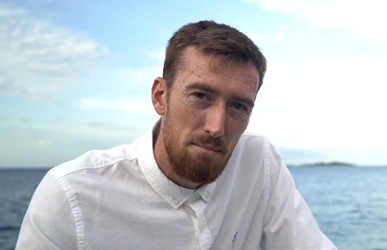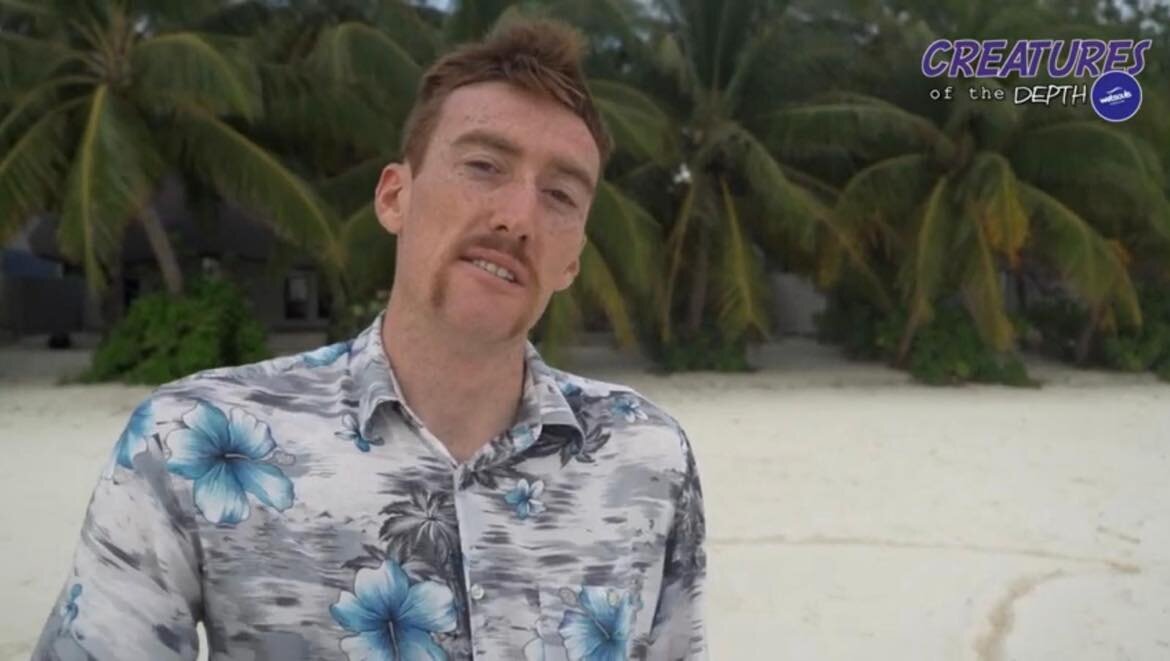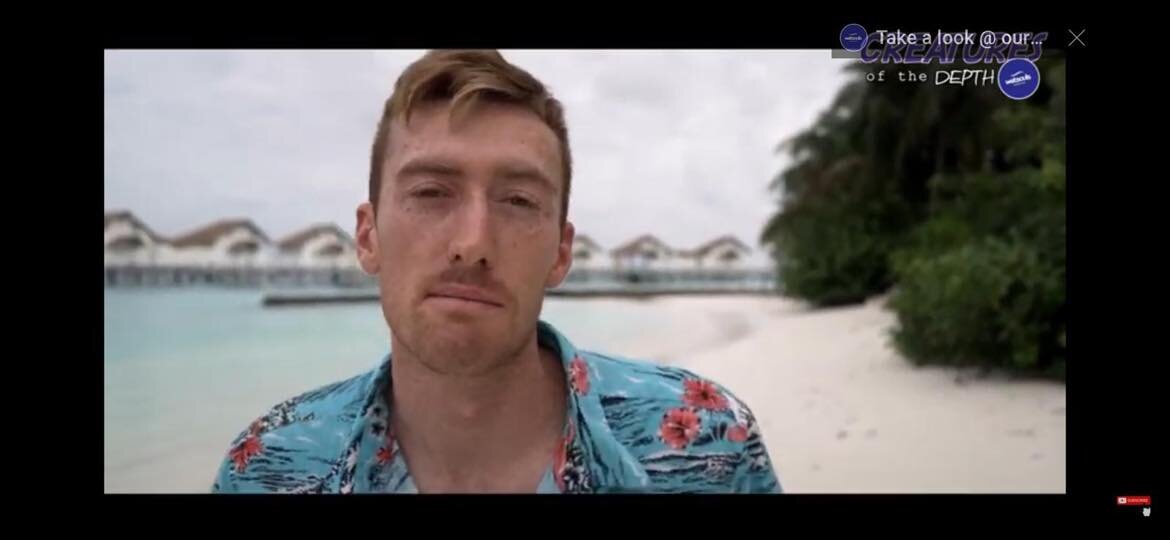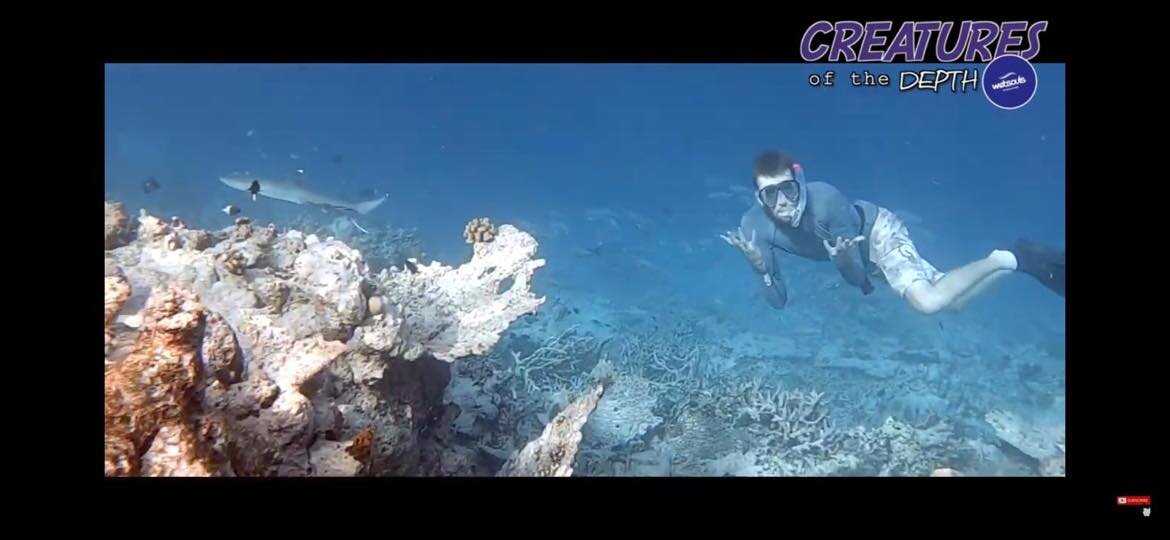Charlie Sleddon-Plant
Marine Biologist, Filmmaker, and Presenter of Creatures of the Deep
Charlie started his marine journey as a fisherman, working with experienced commercial and sport fisherman which helped him understand the rhythms of the ocean from a young age. After spending his youth in the Bahamas, he many hours in the water and read everything he could about his local reefs. He watched some of the local reefs die and sport fisherman catch unnecessary amounts of fish. This sparked a burning desire to pursue a career in marine biology, and return to his home island to save the reefs he had watched die and protect the fish stock that made the waters so rich. After returning to the UK, he completed his Marine biology degree at Swansea University and has since been working around the world as a Marine biologist. Working in the field and seeing the effects we are having on our oceans first-hand, he has been using his camera to help other people understand and see the problems for themselves.
Creatures of the Deep Special: Manta Ray
As a Marine Biologist, I often wonder how I can make the biggest possible impact to help solve the ocean problems that I see daily. It can often seem like an uphill battle as you really get to witness the effects society has on our natural world. As an individual, it can feel like a daunting challenge that requires the help of as many people as possible and an overall change within our society. To tackle these problems, many naturalists turn to filmmaking as a way of sharing what they see, in the hope others become aware of the dangers that lie ahead.
It became apparent to me that the current wildlife documentary industry is saturated with similar content. Whilst in the Maldives, I used the Blue Planet series to try educating the island workers about the surrounding marine environment. I was amazed to see how little interest people showed for something I considered revolutionary and viewpoint changing material. It occurred to me that this may not be to everyone’s taste, and that some people consume media purely for entertainment purposes.
If we truly want to make the most impact, we must ask ourselves about the why-nots. Why do we have such amazing documentaries that simply contain the key information we need to understand our problems, but the subject matter is still so widely misunderstood? It’s a big question, but I believe part of that is down to the fact that many people have no prior connection to our oceans, and have never been exposed to the subject matter. The preliminary stages of engagement are not there. The recent success of TikTok and seemingly arbitrary subject matters shows that anything can become successful if it’s primarily entertaining on the most fundamental levels. Therefore I must try to adapt the way I do things to try and better suit the wider market.
So I set out to try something new, in the hope of attracting this “uninterested” audience. When I think about all the things that have inspired me, they have been extremely professional, factual, cinematic, and clinical in the way they are explained. So maybe if I tried to prioritize different values, I would get a completely different result. Therefore, I’d attract an audience who valued these things. I created a very informal, silly, loosely series explained with more home style footage to help people connect more to what they are watching. The series may be a bit unconventional, but then again……. that’s the point.
Videomaking How-to Guide:
1. Find a Mentor
I am no experienced film maker, but a colleague and now friend of mine are. Nicholas Pollazo already had experience in video making and also had a YouTube channel (Wetsouls) that he was looking to expand. By using his technical knowledge, I could focus on the content side of things, and not have to use my time learning how to edit the smaller details. He also had much better camera software and professional video editing software so we could achieve a more professional look that would not have been able to do by myself. Although I did eventually learn to do this, it would have taken a longer time to produce the level of quality that I wanted that I would never have had the opportunity to make the other part of the series.
2. Write a Script
Writing a script means you have a solid backbone in the way you want your program to go, and the people you are working with can fully understand the direction. You can always change it or add as you go, but it also allows your colleagues to suggest ideas too. It doesn’t have to be perfect. In fact, many times we used the script as a reference but would improvise certain scenes to give it a more off the cuff feel.
3. Storytelling
Most courses and film makers will tell you that story is the most important thing. While this is absolutely true, in this case the point was just to have a bit of fun with the viewer so it wasn’t as important.
4. Moments of Engagement
In trying to do things differently, I would intentionally throw bizarre and random skits and props into the mix. They were littered throughout to keep things interesting. I have a wide and strange sense of humour so there were many references and low key jokes. Many of them are low-key, but there is something there for everyone (hopefully).
5. Choose your information wisely, and asses your desired outcome
In truth, I could have made 30 minute long episodes on some of the topics and go into extreme detail. But you must ask yourself what effect it is you’re trying to achieve. For me, it was to educate and engage people. I was aware that if I put too much information in the videos, the most important information would be diluted in a sea of facts. Additionally, it might start to bore people.
The Equipment Used Behind the Scenes
Underwater footage was mostly taken with a GoPro, the presenter segments were done using a diving rig, mounted with dive lights and an SLR camera and shotgun microphone. Footage was editing using Final Cut pro. We also used some filler shots which you can use from other YouTube videos which have been posted as Creative Commons. You can filter for these videos in the search box of YouTube, you must credit these sources.




